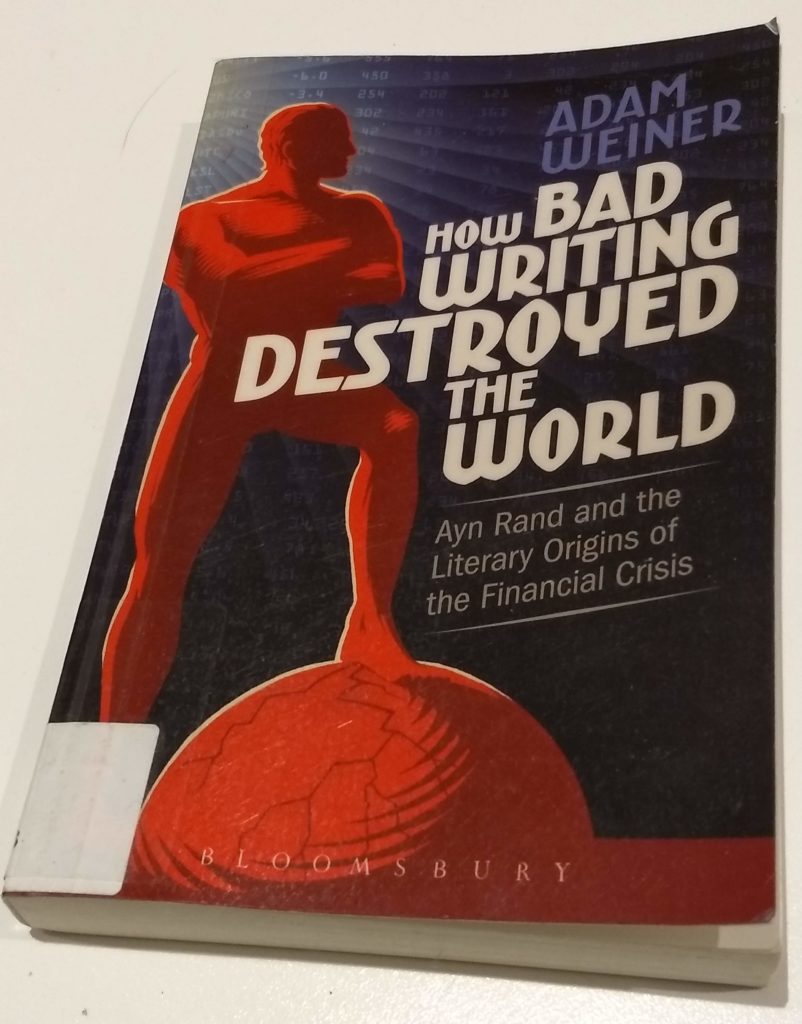
A bad 19th-century Russian novel inspired Ayn Rand’s bad 20th-century novels, which inspired Alan Greenspan to become chairman of the US Federal Reserve and “destroy the world” by laying the foundations for the Global Financial Collapse of 2008. That’s the premise behind this book.
Nikolai Chernyshevsky’s 1863 novel/manifesto What Is to Be Done? would normally have been banned by the government censors for being too revolutionary, but apparently they thought the book was so badly written that it would actually discredit the revolutionary cause. In fact it became very popular, and its credo of rationalism was quite influential.
Many were not convinced through: the book spurred Fyodor Dostoyevsky, till then just a middling writer, to produce his great novels in reaction to Chernyshevsky. Vladimir Nabokov was another skeptic.
Ayn Rand, who emigrated from Russia to America in the 1920s, seemed to pick up Chernyshevsky’s ideas and turn them up to 11, with her ideas of “objectivism” and “rational egoism”. Weiner’s cherry-picked quotations from her magnum opus Atlas Shrugged make it appear totally bonkers. I haven’t read it, but I have read her first hit novel The Fountainhead, which is probably similar. It is a cracking good page-turner, but the writing is a bit clunky at times and the characters are pretty much all polarised and one-dimensional. And there’s too much impassioned speechifying. For all their talk of “rationalism”, their ideas are full of non sequiturs and unstated assumptions.
I did find it slightly disturbing that Alan Greenspan really was a Rand disciple. Even her best ideas are not original, and her worst sound like the ranting of a psychopath. I can understand how people could be seduced by the excitement of something exotic, but impressionable folk like that should not go on to run the most powerful economy in the world.
It seems that there is not much evidence that Rand was really influenced by What Is To Be Done?, or even read it. So this book is really two independent books. The first is an interesting story of Chernyshevsky’s novel, its genesis, the contemporary reaction to it, and its aftermath. The second is an amusing hatchet job on Atlas Shrugged and Ayn Rand, which are admittedly pretty soft targets. These two books have been combined here, possibly for publishing reasons as much as anything. It’s all fascinating, and much more fun than plodding through Rand’s own writing.